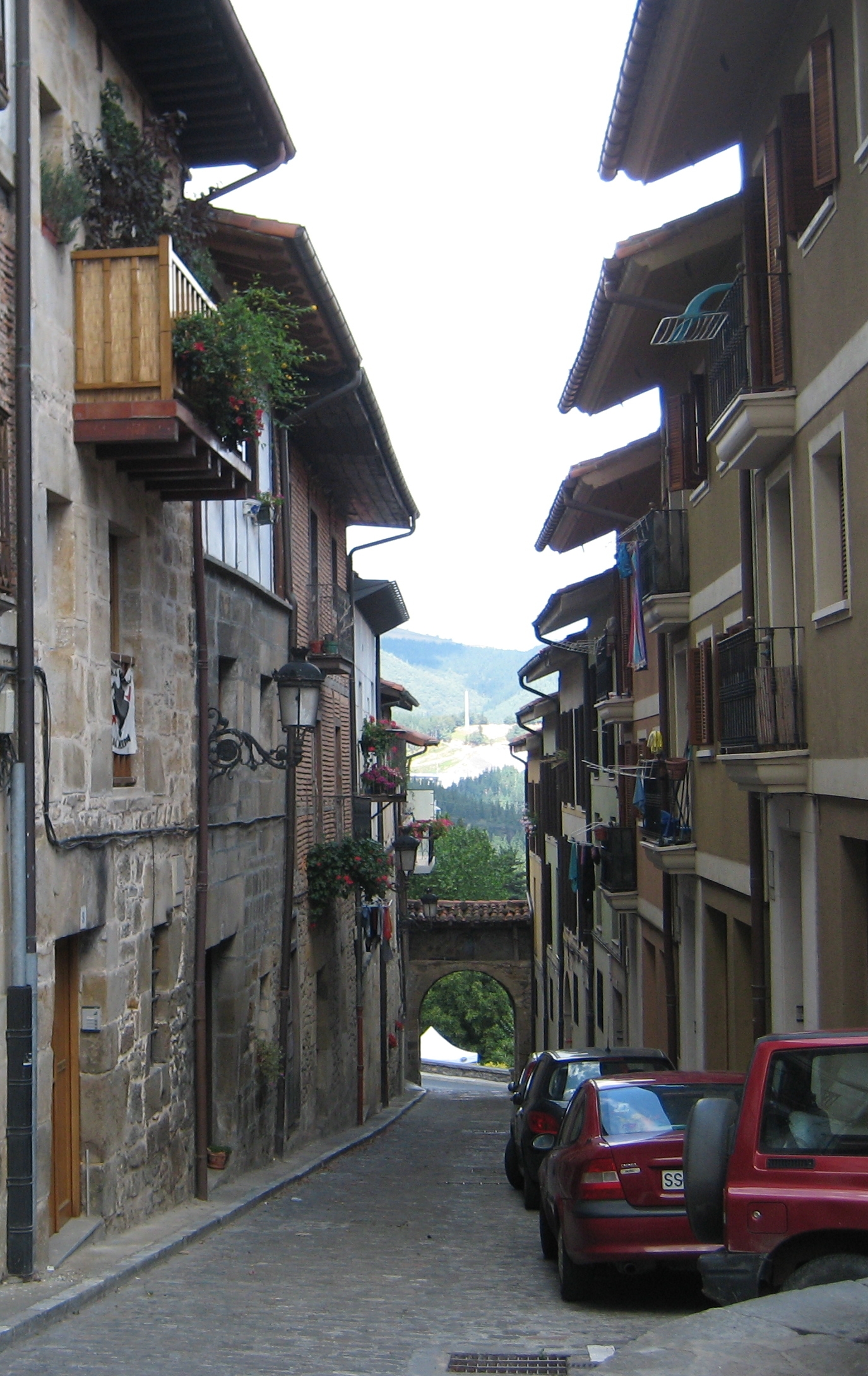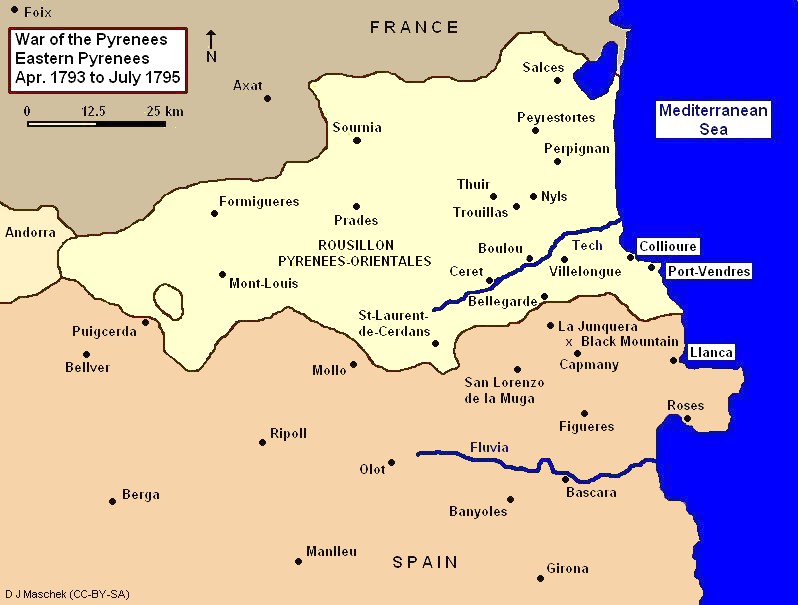|
Salinas De Léniz
Leintz Gatzaga (Spanish, ''Salinas de Léniz'') is a town located in the province of Gipuzkoa, in the Autonomous Community of Basque Country, northern Spain. The municipality's population is 251 (2015). Etymology The first part of the name, Leintz, comes from the name of the valley, the village being located in the Valley of Leintz. The second part is linked to the saltmine (''gatzaga'' in Basque) located in the village, part of the reason for the village's existence. Salt is no longer produced but used to be a mainstay of the village's economy. Geography Leintz-Gatzaga covers 14.7 km² and is located in the province of Gipuzkoa, very close to Álava. It is situated in a mountainous area with steep hillsides, wooded and with almost no flat agricultural land. It is in the region of Alto Deva where the source of the river Deba is located. Leintz-Gatzaga has a small old part that consisting of four streets, formerly walled. Most of the residents live in this part, the res ... [...More Info...] [...Related Items...] OR: [Wikipedia] [Google] [Baidu] |
Municipalities Of Spain
The municipality ( es, municipio, , ca, municipi, gl, concello, eu, udalerria, ast, conceyu)In other languages of Spain: * Catalan/Valencian (), sing. ''municipi''. * Galician () or (), sing. ''municipio''/''bisbarra''. *Basque (), sing. ''udalerria''. * Asturian (), sing. ''conceyu''. is the basic local administrative division in Spain together with the province. Organisation Each municipality forms part of a province which in turn forms part or the whole of an autonomous community (17 in total plus Ceuta and Melilla): some autonomous communities also group municipalities into entities known as ''comarcas'' (districts) or '' mancomunidades'' (commonwealths). There are a total of 8,131 municipalities in Spain, including the autonomous cities of Ceuta and Melilla. In the Principality of Asturias, municipalities are officially named ''concejos'' (councils). The average population of a municipality is about 5,300, but this figure masks a huge range: the most po ... [...More Info...] [...Related Items...] OR: [Wikipedia] [Google] [Baidu] |
Álava
Álava ( in Spanish) or Araba (), officially Araba/Álava, is a province of Spain and a historical territory of the Basque Country, heir of the ancient Lordship of Álava, former medieval Catholic bishopric and now Latin titular see. Its capital city, Vitoria-Gasteiz, is also the seat of the political main institutions of the Basque Autonomous Community. It borders the Basque provinces of Biscay and Gipuzkoa to the north, the community of La Rioja to the south, the province of Burgos (in the community of Castile and León) to the west and the community of Navarre to the east. The Enclave of Treviño, surrounded by Alavese territory, is however part of the province of Burgos, thus belonging to the autonomous community of Castile and León, not Álava. It is the largest of the three provinces in the Basque Autonomous Community in geographical terms, with 2,963 km2, but also the least populated with 331,700 inhabitants (2019). Etymology Built around the Roman mansion Al ... [...More Info...] [...Related Items...] OR: [Wikipedia] [Google] [Baidu] |
Idiazabal
Idiazabal is a town and municipality in the Goierri region of the province of Gipuzkoa, in the autonomous community of the Basque Country, northern Spain. The area has given its name to the renowned Idiazabal cheese of the region, one of the best-known products of the Basque cuisine Basque cuisine refers to the cuisine of the Basque Country and includes meats and fish grilled over hot coals, '' marmitako'' and lamb stews, cod, Tolosa bean dishes, paprikas from Lekeitio, '' pintxos'' (Basque ''tapas)'', Idiazabal sheep' .... References External links Official website of the municipal government IDIAZABAL in the Bernardo Estornés Lasa - Auñamendi Encyclopedia (Euskomedia Fundazioa) Municipalities in Gipuzkoa {{BasqueCountry-geo-stub ... [...More Info...] [...Related Items...] OR: [Wikipedia] [Google] [Baidu] |
Carlist War
The Carlist Wars () were a series of civil wars that took place in Spain during the 19th century. The contenders fought over claims to the throne, although some political differences also existed. Several times during the period from 1833 to 1876 the Carlists — followers of Don Carlos (1788–1855), an infante, and of his descendants — rallied to the cry of "God, Country, and King" and fought for the cause of Spanish tradition (Legitimism and Catholicism) against liberalism, and later the republicanism, of the Spanish governments of the day. The Carlist Wars had a strong regional component ( Basque region, Catalonia, etc.), given that the new order called into question region–specific law arrangements and customs kept for centuries. When King Ferdinand VII of Spain died in 1833, his widow, Queen Maria Cristina, became regent on behalf of their two-year-old daughter Queen Isabella II. The country splintered into two factions known as the Cristinos (or Isabelinos) and t ... [...More Info...] [...Related Items...] OR: [Wikipedia] [Google] [Baidu] |
War Of The Pyrenees
The War of the Pyrenees, also known as War of Roussillon or War of the Convention, was the Pyrenean front of the First Coalition's war against the First French Republic. It pitted Revolutionary France against the kingdoms of Spain and Portugal from March 1793 to July 1795 during the French Revolutionary Wars. The war was fought in the eastern and western Pyrenees, at the French port of Toulon, and at sea. In 1793, a Spanish army invaded Roussillon in the eastern Pyrenees and maintained itself on French soil through April 1794. The French army drove the Spanish army back into Catalonia and inflicted a serious defeat in November 1794. After February 1795, the war in the eastern Pyrenees became a stalemate. In the western Pyrenees, the French began to win in 1794. By 1795, the French army controlled a portion of northeast Spain. The war was brutal in at least two ways. The Committee of Public Safety decreed that all French royalist prisoners be executed. Also, French generals ... [...More Info...] [...Related Items...] OR: [Wikipedia] [Google] [Baidu] |
War Of Spanish Independence
The Peninsular War (1807–1814) was the military conflict fought in the Iberian Peninsula by Spain, Portugal, and the United Kingdom against the invading and occupying forces of the First French Empire during the Napoleonic Wars. In Spain, it is considered to overlap with the Spanish War of Independence. The war started when the French and Spanish armies invaded and occupied Portugal in 1807 by transiting through Spain, and it escalated in 1808 after Napoleonic France occupied Spain, which had been its ally. Napoleon Bonaparte forced the abdications of Ferdinand VII and his father Charles IV and then installed his brother Joseph Bonaparte on the Spanish throne and promulgated the Bayonne Constitution. Most Spaniards rejected French rule and fought a bloody war to oust them. The war on the peninsula lasted until the Sixth Coalition defeated Napoleon in 1814, and is regarded as one of the first wars of national liberation. It is also significant for the emergence of large-sc ... [...More Info...] [...Related Items...] OR: [Wikipedia] [Google] [Baidu] |
Crown Of Castile
The Crown of Castile was a medieval polity in the Iberian Peninsula that formed in 1230 as a result of the third and definitive union of the crowns and, some decades later, the parliaments of the kingdoms of Castile and León upon the accession of the then Castilian king, Ferdinand III, to the vacant Leonese throne. It continued to exist as a separate entity after the personal union in 1469 of the crowns of Castile and Aragon with the marriage of the Catholic Monarchs up to the promulgation of the Nueva Planta decrees by Philip V in 1715. In 1492, the voyage of Christopher Columbus and the discovery of the Americas were major events in the history of Castile. The West Indies, Islands and Mainland of the Ocean Sea were also a part of the Crown of Castile when transformed from lordships to kingdoms of the heirs of Castile in 1506, with the Treaty of Villafáfila, and upon the death of Ferdinand the Catholic. The discovery of the Pacific Ocean, the Conquest of the Aztec Empi ... [...More Info...] [...Related Items...] OR: [Wikipedia] [Google] [Baidu] |
Vaporization System
Vaporization (or vaporisation) of an element or compound is a phase transition from the liquid phase to vapor. There are two types of vaporization: evaporation and boiling. Evaporation is a surface phenomenon, whereas boiling is a bulk phenomenon. Evaporation is a phase transition from the liquid phase to vapor (a state of substance below critical temperature) that occurs at temperatures below the boiling temperature at a given pressure. Evaporation occurs ''on the surface''. Evaporation only occurs when the partial pressure of vapor of a substance is less than the equilibrium vapor pressure. For example, due to constantly decreasing pressures, vapor pumped out of a solution will eventually leave behind a cryogenic liquid. Boiling is also a phase transition from the liquid phase to gas phase, but boiling is the formation of vapor as bubbles of vapor ''below the surface'' of the liquid. Boiling occurs when the equilibrium vapor pressure of the substance is greater than or e ... [...More Info...] [...Related Items...] OR: [Wikipedia] [Google] [Baidu] |
Count Of Oñati
Count (feminine: countess) is a historical title of nobility in certain European countries, varying in relative status, generally of middling rank in the hierarchy of nobility. Pine, L. G. ''Titles: How the King Became His Majesty''. New York: Barnes & Noble, 1992. p. 73. . The etymologically related English term "county" denoted the territories associated with the countship. Definition The word ''count'' came into English from the French ''comte'', itself from Latin ''comes''—in its accusative ''comitem''—meaning “companion”, and later “companion of the emperor, delegate of the emperor”. The adjective form of the word is "comital". The British and Irish equivalent is an earl (whose wife is a "countess", for lack of an English term). In the late Roman Empire, the Latin title ''comes'' denoted the high rank of various courtiers and provincial officials, either military or administrative: before Anthemius became emperor in the West in 467, he was a military ''comes ... [...More Info...] [...Related Items...] OR: [Wikipedia] [Google] [Baidu] |
Iron Ages
Iron () is a chemical element with symbol Fe (from la, ferrum) and atomic number 26. It is a metal that belongs to the first transition series and group 8 of the periodic table. It is, by mass, the most common element on Earth, right in front of oxygen (32.1% and 30.1%, respectively), forming much of Earth's outer and inner core. It is the fourth most common element in the Earth's crust. In its metallic state, iron is rare in the Earth's crust, limited mainly to deposition by meteorites. Iron ores, by contrast, are among the most abundant in the Earth's crust, although extracting usable metal from them requires kilns or furnaces capable of reaching or higher, about higher than that required to smelt copper. Humans started to master that process in Eurasia during the 2nd millennium BCE and the use of iron tools and weapons began to displace copper alloys, in some regions, only around 1200 BCE. That event is considered the transition from the Bronze Age to the Iron Age ... [...More Info...] [...Related Items...] OR: [Wikipedia] [Google] [Baidu] |




